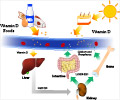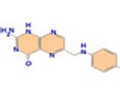Individuals having lower levels of vitamin D were are twice as more likely to die premature than those with higher levels of the vitamin, a new study has found

The specific variant of vitamin D assessed was 25-hydroxyvitamin D, the primary form found in blood.
"Three years ago, the Institute of Medicine (IOM) concluded that having a too-low blood level of vitamin D was hazardous," Cedric Garland, DrPH, professor in the Department of Family and Preventive Medicine at University of California, San Diego and lead author of the study said.
"This study supports that conclusion, but goes one step further. The 20 nanograms per milliliter (ng/ml) blood level cutoff assumed from the IOM report was based solely on the association of low vitamin D with risk of bone disease. This new finding is based on the association of low vitamin D with risk of premature death from all causes, not just bone diseases," Garland said.
Garland said that the blood level amount of vitamin D associated with about half of the death rate was 30 ng/ml. He noted that two-thirds of the US population has an estimated blood vitamin D level below 30 ng/ml.
"This study should give the medical community and public substantial reassurance that vitamin D is safe when used in appropriate doses up to 4,000 International Units (IU) per day," Heather Hofflich, DO, professor in the UC San Diego School of Medicine's Department of Medicine said.
The findings are published in the American Journal of Public Health.
 MEDINDIA
MEDINDIA



 Email
Email










